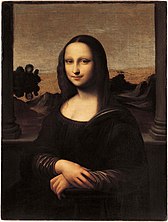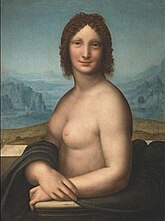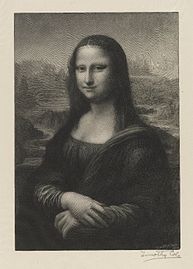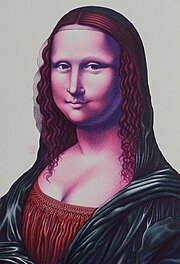
The Mona Lisa is a half-length portrait painting by Italian artist Leonardo da Vinci. Considered an archetypal masterpiece of the Italian Renaissance, it has been described as "the best known, the most visited, the most written about, the most sung about, [and] the most parodied work of art in the world". The painting's novel qualities include the subject's enigmatic expression, monumentality of the composition, the subtle modelling of forms, and the atmospheric illusionism.

Vincenzo Peruggia was an Italian museum worker, artist and thief, most famous for stealing the Mona Lisa from the Louvre Museum in Paris on 21 August 1911.
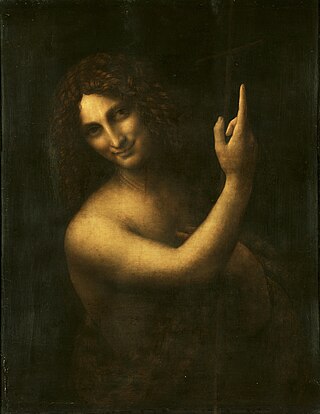
Saint John the Baptist is a High Renaissance oil painting on walnut wood by Leonardo da Vinci. Likely to have been completed between 1513 and 1516, it is believed to be his final painting. Its original size was 69 by 57 centimetres.

Leonardo da Vinci was an Italian Renaissance painter and polymath who achieved legendary fame and iconic status within his own lifetime. His renown primarily rests upon his brilliant achievements as a painter, the Mona Lisa and The Last Supper, being two of the most famous artworks ever created, but also upon his diverse skills as a scientist and inventor. He became so highly valued during his lifetime that the King of France bore him home like a trophy of war, supported him in his old age and, according to legend, cradled his head as he died.

The Isleworth Mona Lisa is an early 16th-century oil on canvas painting depicting the same subject as Leonardo da Vinci's Mona Lisa, though with the subject depicted as being a younger age. The painting is thought to have been brought from Italy to England in the 1780s, and came into public view in 1913 when the English connoisseur Hugh Blaker acquired it from a manor house in Somerset, where it was thought to have been hanging for over a century. The painting would eventually adopt its unofficial name of Isleworth Mona Lisa from Blaker's studio being in Isleworth, West London. Since the 1910s, experts in various fields, as well as the collectors who have acquired ownership of the painting, have asserted that the major elements of the painting are the work of Leonardo himself, as an earlier version of the Mona Lisa.

L.H.O.O.Q. is a work of art by Marcel Duchamp. First conceived in 1919, the work is one of what Duchamp referred to as readymades, or more specifically a rectified ready-made. The readymade involves taking mundane, often utilitarian objects not generally considered to be art and transforming them, by adding to them, changing them, or simply renaming and reorienting them and placing them in an appropriate setting. In L.H.O.O.Q. the found object is a cheap postcard reproduction of Leonardo da Vinci's early 16th-century painting Mona Lisa onto which Duchamp drew a moustache and beard in pencil and appended the title.

The 16th-century portrait Mona Lisa, or La Gioconda, painted in oil on a poplar panel by Leonardo da Vinci, has been the subject of a considerable deal of speculation.
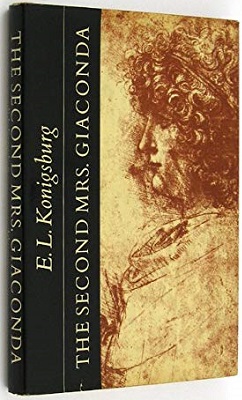
The Second Mrs. Giaconda, later The Second Mrs. Gioconda, is a historical novel for children by E. L. Konigsburg. Set primarily in Milan, Italy, it features Leonardo da Vinci, his servant Salai, and duchess Beatrice d'Este. Through the experiences of Salai narrated in third person, it explores the background of da Vinci's Mona Lisa.

Gian Giacomo Caprotti da Oreno, better known as Salaì was an Italian artist and pupil of Leonardo da Vinci from 1490 to 1518. Salaì entered Leonardo's household at the age of ten. He created paintings under the name of Andrea Salaì. He was described as one of Leonardo's students and lifelong companion and servant and was the model for Leonardo's St. John the Baptist,Bacchus and Angelo incarnato.

Salvator Mundi is a painting attributed in whole or in part to the Italian High Renaissance artist Leonardo da Vinci, dated to c. 1499–1510. Long thought to be a copy of a lost original veiled with overpainting, it was rediscovered, restored, and included in an exhibition of Leonardo's work at the National Gallery, London, in 2011–2012. Christie's, who sold the work in 2017, stated that most leading scholars consider it an original work by Leonardo, but this attribution has been disputed by other leading specialists, some of whom propose that he only contributed certain elements; and others who believe that the extensive restoration prevents a definitive attribution.
Alessandro Vezzosi is an Italian art critic, Leonardo scholar, artist, expert on interdisciplinary studies and creative museology, he is also the author of hundreds of exhibits, publications and conferences, in Italy and abroad on Leonardo da Vinci and the Renaissance, contemporary art and design. Amongst others, he was the first scholar from the Armand Hammer Centre for Leonardo Studies from the University of California in Los Angeles (1981), directed by Carlo Pedretti; he taught at the University of Progetto in Reggio Emilia; and he is honorary professor at the Accademia delle Arti del Disegno of Florence. He began as an artist from 1964 to 1971 winning more than 80 prizes in painting competitions. In the Seventies he was the founder of the "Archivio Leonardisimi" and of Strumenti-Memoria del Territorio; he coordinated "ArteCronaca", he was the historical-artistic consultant of the Municipality of Vinci and he collaborated on the publications on Tuscany and Leonardo, modern and contemporary art. In 1980 he curated the Centro di Documentazione Arti Visive of the Municipality of Florence.
Sophie Alexina Victoire Matisse is an American contemporary artist. Matisse initially gained notice for her series of Missing Person paintings, in which she appropriated and embellished upon, or subtracted from, recognizable works from art history.
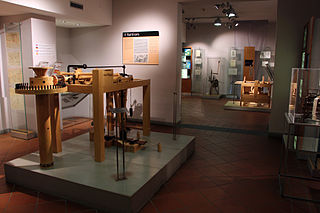
The Museo Ideale Leonardo da Vinci is located in Vinci, Leonardo da Vinci's birthplace, in the province of Florence, Italy. It is part of the Museo leonardiano di Vinci.
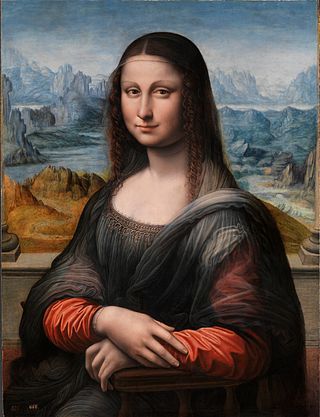
The Prado Mona Lisa is a painting by the workshop of Leonardo da Vinci and depicts the same subject and composition as Leonardo's better known Mona Lisa at the Louvre, Paris. The Prado Mona Lisa has been in the collection of the Museo del Prado in Madrid, Spain since 1819, but was considered for decades a relatively unimportant copy. Following its restoration in 2012, however, the Prado's Mona Lisa has come to be understood as the earliest known studio copy of Leonardo's masterpiece.

La Joconde nue or Monna Vanna is a 1514–1516 charcoal drawing with white highlights by the school of Leonardo da Vinci. It is a semi-nude portrait of a woman, 28-by-21 inch in size. The position of the subject's hands and body are almost identical to that of Leonardo's Mona Lisa, leading some experts to suggest this work may be a preparatory drawing for the famous painting. These experts identify this as an exceptionally fine work by a left-handed master, leading to speculation that it is the work of Leonardo himself. The work has been held by the Condé Museum in Chantilly, France, since 1862.
Jean-Pierre Isbouts is a professor in the Social Sciences PhD program of Fielding Graduate University in Santa Barbara, California, and an archaeologist, author, screenwriter, director, and producer of works addressing various historical periods, particularly the time period of Jesus and that of Renaissance and post-Renaissance art.

The two–Mona Lisa theory is a longstanding theory proposed by various historians, art experts, and others that Leonardo da Vinci painted two versions of the Mona Lisa. Several of these experts have further concluded that examination of historical documents indicates that one version was painted several years before the second.
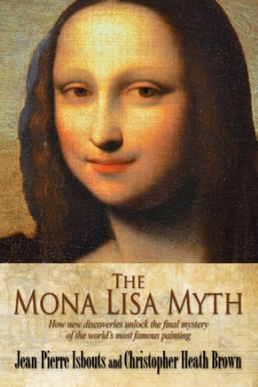
The Mona Lisa Myth is a multimedia project consisting of a 2013 book and a 2014 documentary film, produced in tandem by Renaissance scholar and art historian Jean-Pierre Isbouts, with physician and art collecter Christopher Heath Brown as co-author of the book and as a producer of the documentary, the latter with narration by Morgan Freeman. The book and film each examine the history of the Mona Lisa, and the longstanding theory that the Isleworth Mona Lisa is an earlier version of the same painting, also by Leonardo da Vinci.

Colored Mona Lisa is a painting created by the American artist Andy Warhol in 1963. The painting, which depicts Leonardo da Vinci’s Mona Lisa, sold for $56.2 million at Christie's in 2015.

Hermitage Mona Lisa is a painting on canvas, which was made by an unknown painter in the mid-16th century and is located in the Hermitage Museum of Saint Peterburg. It was transferred from the Antikvariat All-Union Association and entered the Hermitage in 1931.
